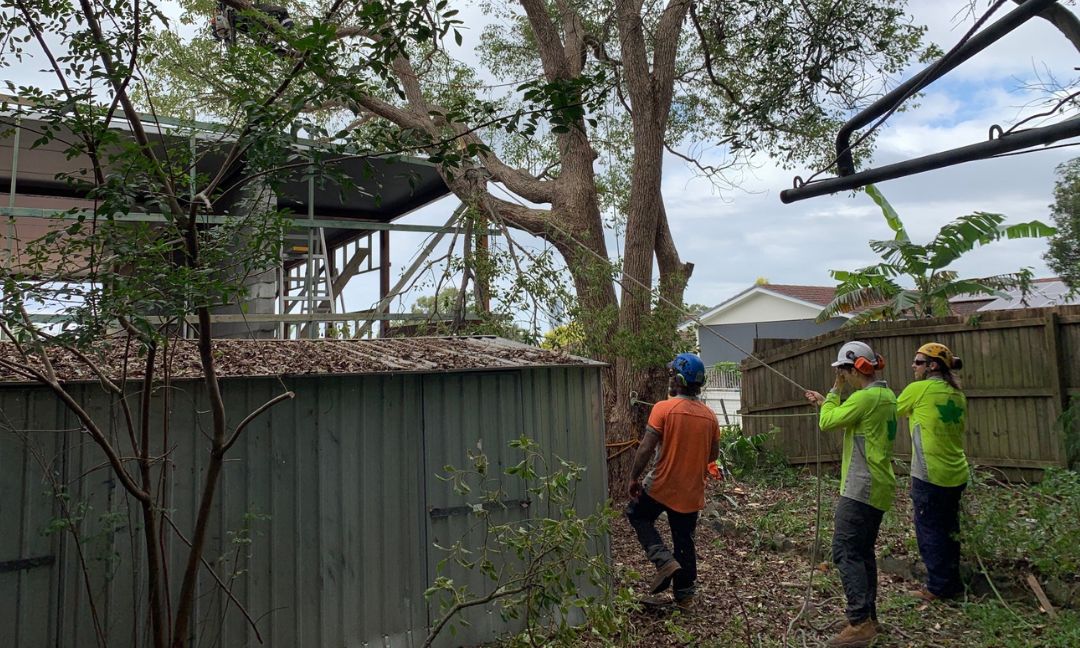The Gold Coast is known for its lush greens and vibrant landscapes. Much of this can be attributed to the large variety of tree species growing throughout the region. Apart from being an essential part of our ecosystem, well-maintained trees enhance curb appeal and overall aesthetics, increasing the value of any home or business property. However, when trees are unkempt, they can become unsightly and pose significant risks. Knowing when to call professional tree care and maintenance is necessary to ensure the trees on your property remain healthy and flourishing. This article will discuss the common signs it’s time to call a professional arborist.
What is an Arborist?
Specialising in Arboriculture, which is the science of caring for trees and other plants, arborists are trained and qualified to take on tree maintenance tasks such as diagnosing tree health issues, tree pruning, removal, lopping, and others. They can also provide guidance on proper planting techniques and long-term care to ensure the health and longevity of trees.
Levels of Arborists
Arborists in Australia are rated through the AQF (Australian Qualifications Framework), which classifies their expertise based on levels of training and knowledge.
AQF Level 3 arborists have training in tree care, health assessment, and safe removal practices, making them qualified to do ground operations, such as tree pruning, trimming, lopping and removal.
AQF Level 5 arborists hold advanced qualifications, allowing them to perform complex consultations and tree risk assessments, develop comprehensive tree preservation plans and furnish detailed arborist and other tree reports.
Look Out for These 10 Telltale Signs It’s Time To Call a Professional Arborist
1. Dead or Dying Branches
If branches appear brittle, lack leaves, or have excessive peeling, the tree may be sick, dying or under stress. More than just an eyesore, these deadwood pose a safety hazard to people and properties as they can easily fall during adverse weather conditions on a calm day because of their weak branches. Arborists can assess the condition of the tree and recommend and carry out tree care and maintenance services.
2. Cracks in the Trunk
The trunk is the backbone of a tree, providing support and structure. Cracks or deep splits in the trunk are red flags that indicate serious structural issues that can compromise the overall integrity of the tree. They can develop from severe weather or signal decay within the tree. If left untreated, these cracks can become more significant, increasing the risk of the tree falling, especially during storms and strong winds, which the Gold Coast experiences frequently.
A qualified arborist on the Gold Coast will be able to assess the severity of the crack and determine whether the tree can be saved or if tree removal is the safest option.
3. Leaning or Unstable Trees
Whilst some trees naturally lean, a sudden change in its angle can indicate a problem with its root system. A tree leaning noticeably to one side might have root damage or soil erosion around the base. When it falls, it can damage properties and harm people and animals.
If a tree starts to lean after a storm or heavy rainfall, it’s one of the signs it’s time to call a professional arborist. They can evaluate whether the tree can be stabilised or if it poses too great a risk that it should be removed.
4. Fungal Growth
Fungi on a tree, especially around the base or on the trunk, is usually a sign of decay. Be on the lookout for mushrooms or bracket fungi growing at the base of a tree, as it can indicate that the tree’s roots or interior are rotting. Fungal growth, even if the tree appears otherwise healthy on the outside, could weaken the tree over time and affect its structural integrity, putting it at risk of falling.
An AQF Level 5 arborist can determine the extent of the decay and whether the tree can be treated or needs to be removed.
5. Excessive Leaf Drop
Trees naturally shed leaves, but excessive leaf drop can be a symptom of a deeper problem. If your tree is losing leaves prematurely or has large sections that remain bare while others flourish, it could be suffering from disease, insect infestation, or environmental stress.
A professional arborist can diagnose the cause of excessive leaf drop and recommend treatments to restore the tree’s health.
6. Damaged Roots
A tree’s root system anchors the tree firmly in the ground. Exposed, damaged, or decaying roots can severely affect the tree’s stability and ability to absorb nutrients and water. Root system damage can result from construction activities, soil compaction, disease, or infestation of pests. The apparent signs include wilting leaves, a thinning canopy, or the tree starting to lean to one side.
An arborist can diagnose root problems and provide solutions, such as supportive bracing and treatment options.
7. Pest Infestation
Borers, Brown Root Rot Or Bracket Fungus and Termites are the three most common tree pests found on the Gold Coast. They can cause irreversible damage if not treated promptly. Signs of infestation include holes in the bark, sawdust-like material at the tree’s base, or unusual leaf discolouration and leaking sap. While some pests are harmless, others can quickly spread disease and weaken the tree.
An arborist can identify the type of pest and recommend an appropriate treatment to save the tree and prevent the infestation from spreading.
8. Cavity or Hollow Sections
Trees with hollow sections or cavities in the trunk or branches are at higher risk of breaking or falling. While some hollowing can occur naturally, and the tree may still be structurally sound, larger or expanding cavities are a cause for concern. It can weaken a tree’s structure, especially in stormy weather.
An arborist can assess whether the tree is stable or if it poses a risk to your property.
9. Excessive Storm Damage
After severe weather, it’s common for trees to lose branches, splintered limbs, cracked trunks, or uprooted roots. These are all signs that a tree may need professional care. It’s important to note that structural issues may not always be immediately apparent, so engaging the services of a professional arborist after a strong storm is highly advised.
An arborist can provide services such as evaluating the damage’s extent and recommending solutions, such as pruning, bracing, or even removal if necessary.
10. No Recent Care
Finally, one of the signs it’s time to call a professional arborist is if it has been a while since your trees have had any tree maintenance. Regular tree pruning, trimming, and inspections can prevent many potential problems and loping and keep your trees healthy and safe.
Do You See Signs It’s Time to Call a Professional Arborist? Get in Touch with Us.
Trees are an integral part of the environment and your property. Having said this, they need proper care to thrive. As a responsible tree owner, always watch out for the signs it’s time to call a professional arborist. If you see apparent dead branches, cracks, or poor structure or notice anything that causes you to be concerned about the condition of your tree, trust that our qualified arborists can help.
Frontier Tree Services has a team of AQF Level 3 and AQF Level 5 arborists who can recommend the right course of action to ensure your trees stay healthy and flourishing, making your home or business property safe and beautiful.







